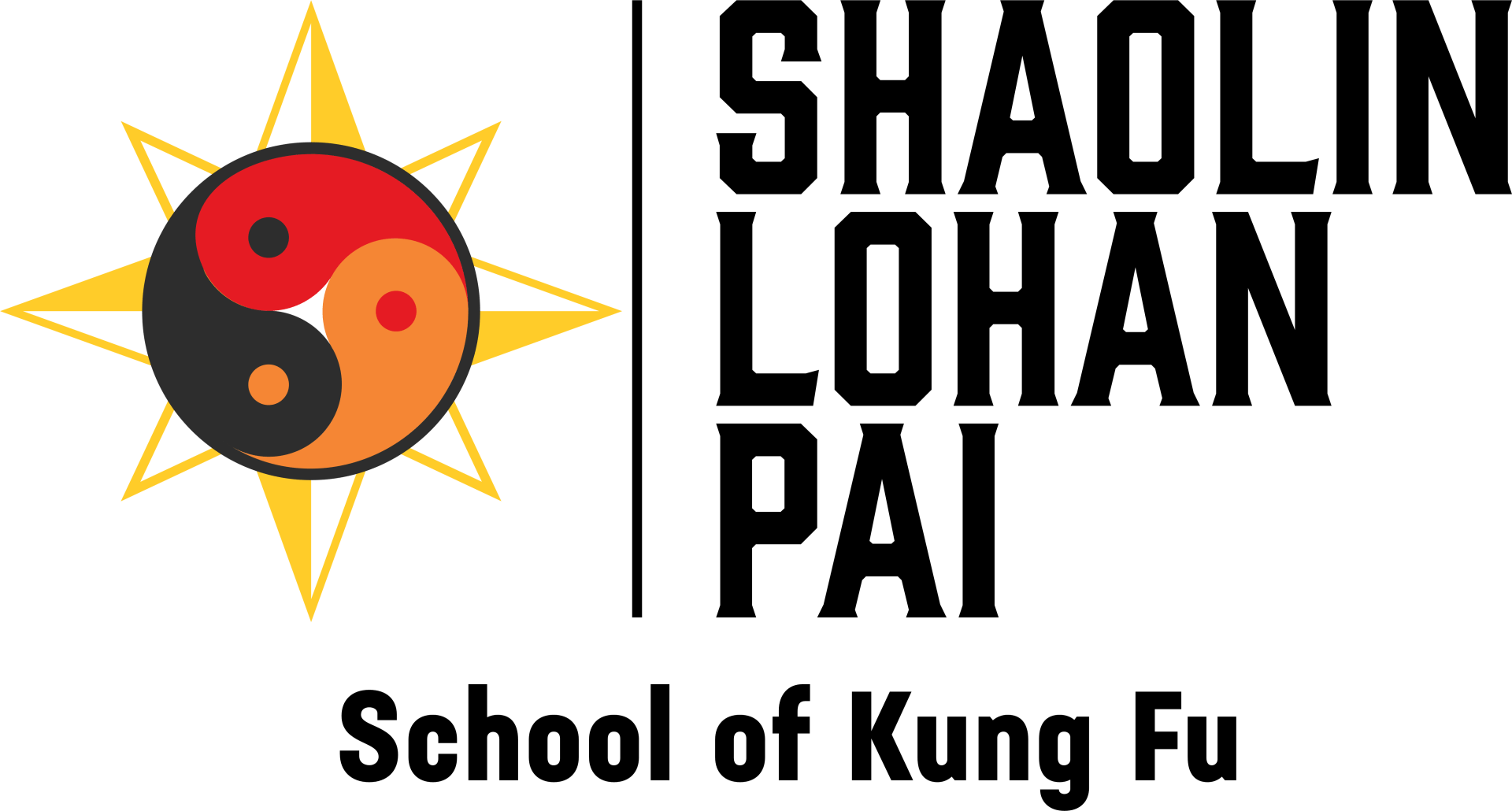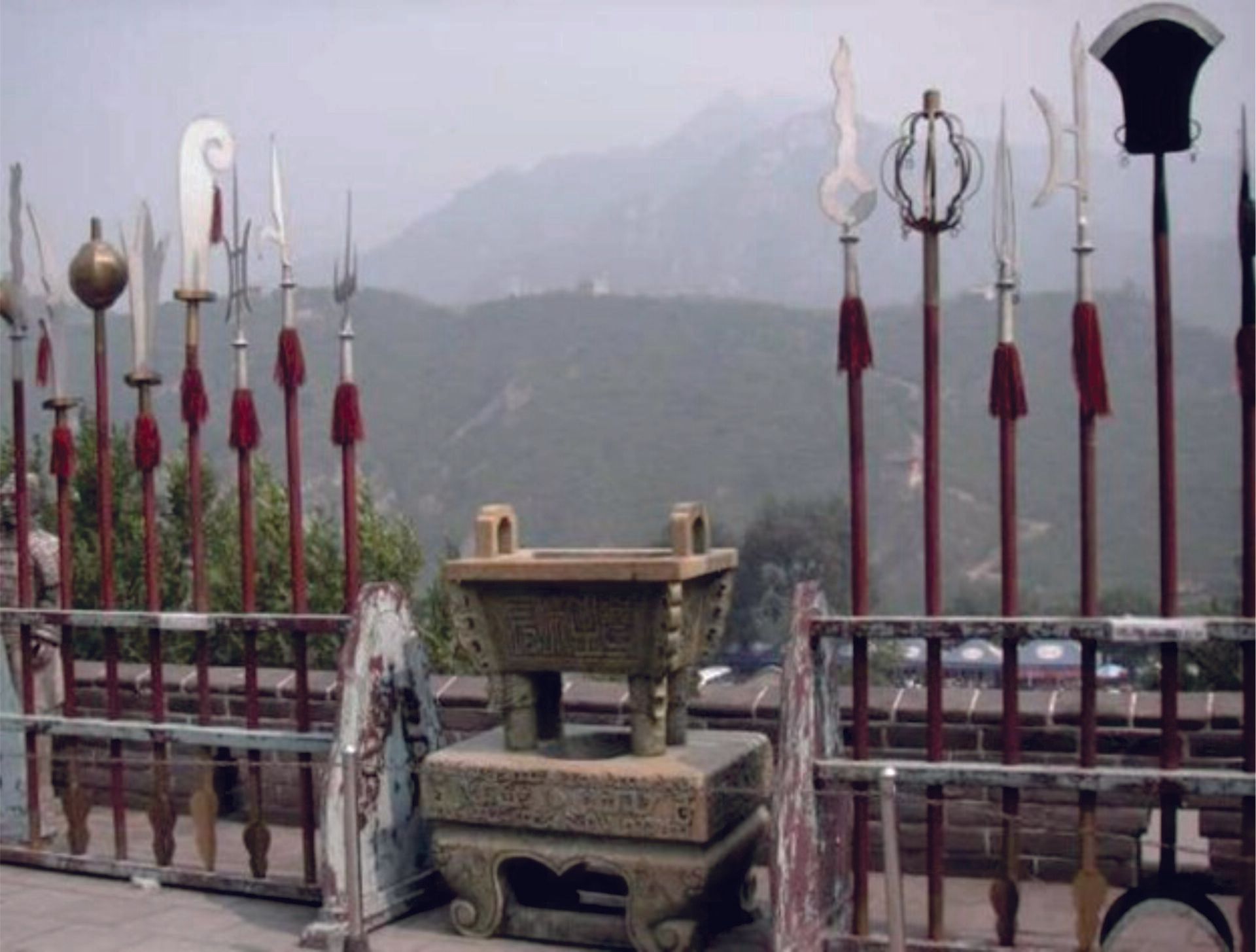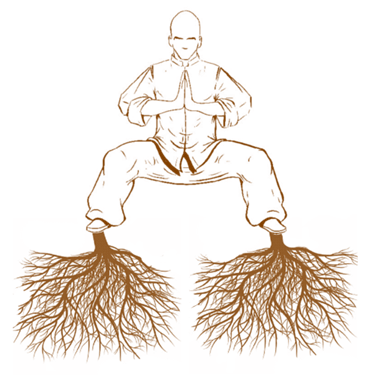History of Shaolin 少林的历史
This Essay was written by Dai-SiHing Kevin Sears. I encourage everyone to go read his many writings, spanning a variety of subjects. He is in my opinion one of the best authors on both Chinese martial history, and Philosophy today.

On a mountain in Henan Province stands a Buddhist temple with a long and tempestuous history. It is the most famous Buddhist temple in China and perhaps even the world – its name is Shaolinsi, or Shaolin Temple. Before we begin to discuss the history of the Shaolin Temple, it is important to note that these dates are not certain and there may be many versions of the actual chronological progression. There are, however, certain events, regardless of the exact dates, that are instrumental to the creation and development of Shaolin. It is the knowledge of these events and their progression that is important to understanding how Shaolin became what it is today.
Chinese history is recorded by dynasty, a sequence of powerful rulers of the same family or group. We will be making reference to these dynasties in our discussion of Shaolin history.
Building the Temple
In the last years of the 5th century CE, there was an Indian monk named Buddhabhadra traveling around China teaching Hinayana Buddhism. The emperor at the time, Emperor Xiaowen, was a follower of Buddhism and invited Buddhabhadra to the Imperial Court, where he was renamed Batuo in Chinese. Emperor Xiaowen was so taken with Batuo’s teachings he offered him a permanent place within the Imperial Court. Batuo desired a location separated from the busy life in the court, so he declined the Emperor’s gracious offer. In return, Emperor Xiaowen commanded in 495 CE (19th year of Taihe, Northern Wei Dynasty)2 that a temple be built deep in the forest of the Shaoshi peak in the Songshan range, the area of the Five Great Mountains sacred to Taoism. This temple was named Shaolin for its location, shao (少) for the Shaoshi peak, lin (林) meaning “forest”, and si (寺) for temple. Therefore, Shaolin Temple (少林寺) means “Forest Temple on Shaoshi.”3 Once built, Batuo and the monks that joined him at Shaolin devoted themselves to the translation of Buddhist scriptures (sutras).
Bodhidharma Comes to Shaolin
Around 527 CE4, another Indian monk named Bodhidharma came to China to spread Mahayana Buddhist teachings. He was said to be an Indian prince turned monk and disciple of Prajnatara, the 27th patriarch of Indian Buddhism. In a similar fashion, Bodhidharma was invited to the Imperial Court of the then emperor, Emperor Wu Ti, and renamed Damo in Chinese. Unlike Batuo, however, Damo was not well received and left the Imperial Court. He then traveled to the Shaolin Temple, famous at the time for their sutra translations, where the abbot refused to allow Damo to enter. Damo retreated to a cave on Wuru Peak, a mountain behind the Shaolin Temple, where he meditated for 9 years. It is said that Damo sat facing a wall for so much of those 9 years that his shadow was permanently etched onto the cave wall.5 During this time of isolation, it is said that Damo, through a fusion of Buddhist and Chinese philosophy created what is known today as Chan (or Zen in Japanese) Buddhism.6 When he returned to the Temple, his determination and devotion impressed the monks and they allowed him to enter.
Legend states that while observing the daily routine of the Temple, Damo was distraught to see many monks of a sickly and weak constitution. He was also upset to see monks losing concentration and falling asleep during their daily tasks and meditations. Without being able to concentrate, Damo could not see how these monks could reach the calm, focused state of mind and inner peace necessary to reach Enlightenment, an important journey for all Buddhists. In addition, with its remote location, there were many dangerous wild animals and bandits around the Temple. With these two considerations in mind, Damo, who as an Indian prince was said to be of the Warrior caste and thus trained in martial arts, created what became known as the 18 Hands of Lohan.7 The exercises are said to be derived from existing methods used by the Chinese people to keep fit and from Damo’s observations of the movement of animals. They were meant to help keep the monks healthy and fit as well as teach basic self-defense. This practice of balancing a healthy mind with a healthy spirit and a healthy body, the Chan Buddhist sect influence, became the pillar upon which Shaolin philosophy and practice was founded.
Temple Growth through the Early Common Era Dynasties
Around 536 CE, Damo passed on, leaving his teachings to his main disciple. For the next 40 years, the Temple refined and practiced the Chan teachings and physical exercises. However, during the years surrounding 574-577 CE (at the end of the Northern Zhou Dynasty), Emperor Zhou Wu issued an Imperial Decree banning Buddhism and the Temple was abandoned. Not long after, in the years between 579 and 580 CE, Emperor Zhou Jing resurrected Buddhism and began the reconstruction of the Shaolin Temple, renaming it “Zhihusi” (Zhihu Temple).
In 580 CE, the Northern Zhou Dynasty was overthrown by Yang Jian, who became Emperor Wen of Sui, creating the Sui Dynasty. In 581, Emperor Wen, a Buddhist devotee, returned the name of “Shaolin” to the Temple. When he returned the name, Emperor Wen issued an Imperial Decree bestowing 100 qing (an ancient Chinese unit of measurement where 1 qing was roughly equivalent to 16.474 acres) of cypress land to the Temple, providing them with some economic strength.
During the later years of the Sui Dynasty, civil unrest, warlord attacks, and bandit raids were frequent and culminated in two important events for the Shaolin Temple. In 618 CE (the first year of the Tang Dynasty), bandits attacked and burned the Temple. Around 621 CE, during the reign of Emperor Gaozu, a dangerous warlord, Wang Shichong, captured the cypress estate bestowed on the Shaolin Temple by Emperor Wen to use as a military staging ground in preparation for attacking the Temple itself. Emperor Gaozu’s son, Prince Li Shimin, engaged Wang Shichong and was captured. From the Temple, 13 monks attacked Wang Shichong’s army, rescued Li Shimin, and captured Wang Shichong’s nephew, Wang Renze.
When Li Shimin ascended to the throne to become the 2nd Emperor of the Tang Dynasty, Emperor Taizong, he issued an Imperial Decree granting land to the Temple, the right to train a small army of martial monks, and other small tokens. This decree, more importantly, gave the monks permission to eat meat and drink alcohol.8 Throughout the long reign of the Tang Dynasty (618-907 CE), the Shaolin Temple flourished under the patronage and support of the Tang Emperors. The temple grew to own over 14,000 Chinese mu (1/100th of a qing) of farmland, 540 Chinese mu of temple area with over 5,400 rooms, and house over 2,000 monks.
In 728 CE, the monks erected a stele at the temple engraved with the stories of the military aid they had given in the past to serve as a reminder to future emperors.
This golden age for the Temple would come to an end toward the last years of the Tang Dynasty (around 845 CE). The current emperor, Emperor Wu Zong, decreed that Buddhism should be destroyed. He razed almost all the temples in the empire and returned thousands of Buddhist clergy into lay life or hiding. This persecution lasted for 20 months until Emperor Xuan Zong ascended the throne in 846 CE and enacted a policy of tolerance.
There are few records of the history of the Shaolin Temple from the end of the Tang Dynasty (907 CE), through the Northern and Southern Song Dynasties (907-1279 CE), through the end of the Yuan Dynasty, the period of Mongol rule, (1279-1368 CE), a period of 461 years. During the Yongxi period of the Song Dynasty, the Shaolin Temple reserved over 9,500 volumes of Buddhist Scriptures, earning the Temple the title of the “First Temple in the World.”
In the year 1126 CE (the year the Northern Song Dynasty fell), a memorial hall was erected in the Bodhidharma’s honor. Popularly known as The Hall of the Chan Founding Patriarch, it is situated two kilometers to the northwest of the monastery.
It was not until the establishment of the Yuan Dynasty that Shaolin Monastery regained its prosperity. Kublai Khan appointed Monk Fuyu, a reputed and erudite leader of the school under the Chan sect, as Abbot of the Shaolin Buddhist Monastery. At that same time, Kublai Khan decreed that Shaolin Monastery was to function as the arch-monastic institution in China, responsible for governing all the Buddhist monasteries across China. With over 2,000 monks, the Temple promoted charitable works and worked toward fully developing Shaolin martial arts.10 Additionally, Abbot Fuyu established the patriarchal clan naming system that has been passed down for 70 generations.
In 1351, the Shaolin Temple was completely burned to the ground during the Hongjin (Red Turban) Rebellion.
Ming and Qing Dynasties
From the beginning of the Ming Dynasty onward, martial arts of the Shaolin School grew more and more sophisticated and mature, with the branches of martial arts also growing in number.
During the Ming Dynasty, Japanese pirates often invaded the coastal areas in the southeastern China. The Ming imperial court repeatedly asked the Shaolin detachment of warrior monks to take part in attacks against the Japanese pirates. The detachment led by both Monk Xiaoshan and Monk Yuekong launched several deadly offensives against the Japanese pirates. Most warrior monks of the detachment, including the two leading monks, were killed in action. The stone memorial to those heroes still stands proudly in front of the gate of the monastery. The inscriptions on the pagodas of the two heroic monks in the Precinct of Pagodas in the monastery describe their feats in detail.
At the end of the Ming dynasty around 1644, China was in chaos. Many scholars started to learn wushu in hopes of fighting against the Manchus, who later invaded central China and founded the Qing dynasty. Among these early scholars were Huang Songxi and Gou Yanwu, who not only practiced wushu but also wrote books about it. These books played an important role in promoting Shaolin kung-fu.
During the early years of the Qing Dynasty, the Shaolin Temple accused of being a haven for anti-Qing activists and was destroyed. The second Qing Emperor of China, Kangxi gifted his own calligraphy to the temple to signify its return to favor. However, the temple was cautious of what types of martial arts would be studied during this time so as to not appear too threatening to the throne.
In 1735, in the 13th year of Emperor Yongzheng, the emperor personally came to the temple with his son, Qianlong, to oversee the renovation and rebuilding of the temple. During this time, they cleansed the temple of “fake monks,” martial artists who wore monks robes without being ordained. However, later in his reign, Emperor Qianlong banned monastic martial arts.
Throughout both the closing period of the Qing Dynasty and the beginning decades of the Republic of China, drastic social upheavals left Shaolin Monastery exposed to the pillage of warlords’ armed forces and bandits. After the 1911 Revolution that overthrew China’s last feudal dynasty, martial art masters were regarded as the hatchet men of officials and wealthy people. Although sometimes they were asked to hold contests, these were merely shows for fun. Under such circumstances, Shaolin Kung-Fu, as with all other schools, couldn’t develop.
In 1928, General Shi Yousan led some detachments under his command and stormed the Shaolin Monastery. The pillage committed by his soldiers culminated in a hellish conflagration that devoured more than two thousand significant buildings in the monastic compound, including the Hall of Sakyamuni, the Hall of the Four Heavenly Sovereigns, the Buddhist Scriptures Depository, the Belfry, and the Tower of Drums. Also destroyed in the conflagration were numerous valuable relics and dossiers. It burned for over 40 days. The main structures and many valued cultural relics were destroyed. Literature on Shaolin wushu, such as the Orthodox Shaolin Skills, Secrets of Shaolin Boxing, and The Essence of Shaolin Boxing, were lost in the fire. This disaster inflicted a deadly blow on the monastery that was almost completely buried under the fire’s debris.
Shaolin in Modern Times
The People’s Republic of China was founded in 1949. At the start, historic elements were not preserved, but gradually the government began to appreciate the cultural value of these elements. Before the middle of the 1960’s, a steady flow of government appropriations had been directed to fuel the reconstruction of the Shaolin Monastery. Step by step, the monastery regained its past splendor and reclaimed its previous glory.
The Constitution of the People’s Republic of China was adopted by the 5th National People’s Congress on Dec. 4, 1982. It has subsequently been revised three times and the current constitution guarantees freedom of religion. Yet the central government in Beijing has limited the right to peacefully assemble. Perhaps because of this, the central government has limited religious practice in China to those groups officially recognized by the government. In 1983, the State Council declared the monastery to be among China’s important cultural sites that deserve national-level protection.
Since the current abbot, Abbot Shi Yongxin assumed leadership of the Shaolin Temple in 1999, his cultural initiatives and global outreach programs, in conjunction with the Chinese government, have helped to preserve Shaolin philosophy and teachings and made these invaluable teachings accessible to the world.
You can read more articles by Dai-SiHing Sears at:
https://splinteredstaff.wordpress.com/
a b c d e f g h i j k l m n o - Do not remove from template!!! it is important to support different fonts

ShaolinLohanInfo@gmail.com
2135 E. Independence #1012 Springfield, MO 65804




